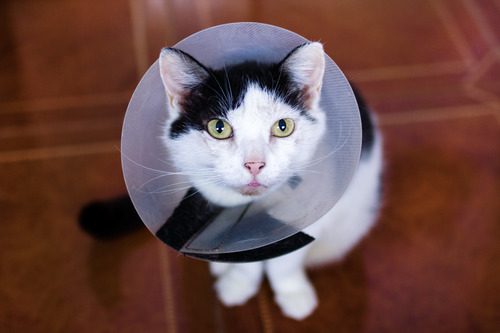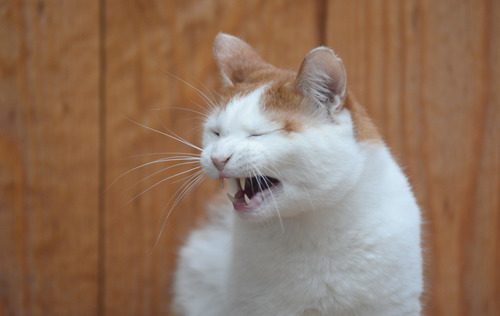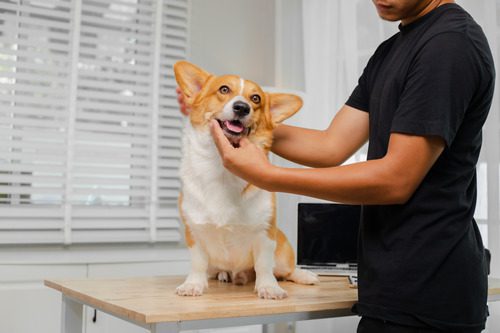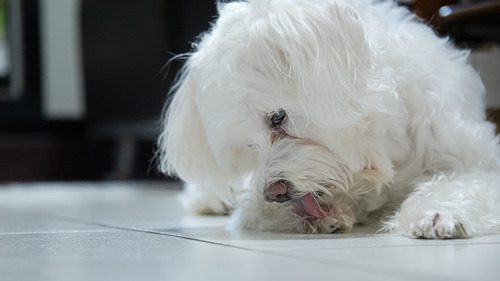Cat Spay Incision Lump: Is It Normal?
When you bring your cat home after a spay procedure, you expect her to rest, recover, and gradually return to her normal routine. But sometimes, pet owners may notice a bump or swelling near the surgery site and immediately worry something is wrong. Seeing a cat spay incision lump can feel unsettling, especially when you’re not sure whether it’s part of the healing process or something that needs veterinary attention. This blog explains why lumps sometimes develop, what they might mean, and why following up with your veterinarian at Cornerstone Veterinary Hospital of Saratoga Springs is the safest way forward.

Why a Cat Spay Incision Lump Might Appear
It’s not uncommon for cats to develop some swelling or a small lump near the spay incision site. This does not always mean there’s a complication, but it does signal that the body is actively responding to the surgery. Understanding the possible reasons behind a cat spay incision lump can help you recognize what’s typical and what may need a closer look.
Normal Post-Surgical Reactions
After any surgery, the body begins the healing process immediately. Minor swelling or firmness around the incision may be the result of tissue adjusting, sutures dissolving, or a small amount of fluid building beneath the skin. These lumps are often temporary and may decrease over time.
Suture Material
Some cats react to the material used in their sutures. When this happens, the immune system may create a small lump as the body works to break down the stitches. This type of reaction is not unusual, and the lump may be firm to the touch but otherwise not painful for the cat.
Activity Levels
Cats that resume jumping or playing too soon after surgery can develop a cat spay incision lump from excessive movement. Too much strain on the healing tissues can cause swelling or fluid buildup, which is why rest and restricted activity are so important during recovery.
Possible Concerns Related to a Cat Spay Incision Lump
While many lumps are harmless, there are cases where swelling or a bump could point to a complication. Knowing the difference between what may be expected and what may be concerning helps you decide when to call your veterinary team.
Seromas
A seroma is a pocket of clear fluid that sometimes collects under the skin after surgery. It often feels soft or squishy and may appear near the incision site. Seromas are usually not painful but should always be evaluated to confirm that they aren’t something more serious.
Infections
An infection at the incision site may also appear as swelling or a raised lump. This kind of cat spay incision lump may be accompanied by redness, discharge, or changes in your cat’s behavior, such as lethargy or reduced appetite. Infections require veterinary treatment to prevent further complications.
Hernias
In some cases, a cat spay incision lump may indicate that tissues or organs are pushing through a weakened area near the surgical site. This is known as a hernia, and it can be more serious than fluid buildup or a mild suture reaction. Hernias typically need veterinary intervention.
How Veterinarians Evaluate a Cat Spay Incision Lump
If you notice a lump, your next step should be to schedule an appointment with your veterinarian. At Cornerstone Veterinary Hospital of Saratoga Springs, our team uses a thorough approach to determine the cause of a cat spay incision lump and recommend the best next steps.
Physical Examination
Your veterinarian will carefully examine the incision site, check for signs of redness, discharge, or tenderness, and evaluate the firmness of the lump. This hands-on exam often provides important clues about the underlying cause.
Diagnostic Tools
If needed, imaging tools like ultrasound or X-rays may be used to rule out complications such as a hernia. In some cases, a sample of fluid from the lump may be collected to identify whether it’s a seroma, infection, or something else.
Treatment Planning
Once the cause is identified, your veterinarian will create a treatment plan. Some cat spay incision lumps resolve with time and monitoring, while others may require medical intervention.
What Pet Owners Should Expect During Recovery
Even when a cat spay incision lump is not a serious concern, it’s important to follow your veterinarian’s instructions closely during recovery. Proper aftercare helps reduce risks and promotes healing.
Rest and Activity Restriction
Cats are naturally active and curious, but limiting jumping, running, or rough play is essential during recovery. A restricted environment helps minimize swelling and reduces the likelihood of complications.
Monitoring the Incision
Pet owners should check the incision site daily. Look for changes in size, color, or texture of the lump and note any additional signs that may indicate discomfort.
Follow-Up Visits
Your vet may recommend follow-up appointments to track healing and confirm that the cat spay incision lump is resolving appropriately. These visits provide peace of mind and allow early intervention if changes occur.
When to Contact Cornerstone Veterinary Hospital
If you ever feel unsure about your cat’s healing process, contacting your veterinary team is always the right decision. No concern is too small when it comes to post-surgical recovery. At Cornerstone Veterinary Hospital of Saratoga Springs, our doctors and staff are here to evaluate any concerns you may have about a cat spay incision lump. Cats recover best with attentive care, professional oversight, and a calm environment. If you notice a lump, swelling, or anything unusual after your cat’s spay surgery, call our team at (518) 691-3300.
Supporting Your Cat’s Recovery with Professional Care
Seeing a cat spay incision lump can feel worrisome, but with the right veterinary support, most cats continue to heal successfully. While some lumps are a normal part of the healing process, others need attention to prevent complications. Trusting experienced veterinarians to evaluate the incision site provides reassurance and protects your cat’s long-term health. If you live in Saratoga Springs or the surrounding communities, the team at Cornerstone Veterinary Hospital is ready to help guide you and your cat through a safe, comfortable recovery. Call (518) 691-3300 today to schedule an appointment.
Recent Posts
Why Is My Cat Reverse Sneezing?
Why Is My Cat Reverse Sneezing? If you’ve ever seen your cat suddenly stop, extend their neck,…
Dog Loose Tooth: What to Do
Dog Loose Tooth: What to Do When you notice a dog’s loose tooth, it can be an…
Dog Yeast Infection in Paws
Dog Yeast Infection in Paws If your dog has been licking, chewing, or biting at their paws…
About Us
Originally opened as Animal Care Hospital by Dr. Mark Johnston in 1989, the hospital became Cornerstone Veterinary Hospital in 2015 when it was purchased by Drs. Alan and Lisa Knott. The name 'Cornerstone' holds a special place in their hearts, representing not only their Christian faith but also their commitment to being the cornerstone of the community in which they practice. As a family-owned and operated practice, every pet is treated as part of the family, ensuring they receive the highest standard of care. The team at Cornerstone Veterinary Hospital is dedicated to building lasting relationships with clients and their beloved pets, striving to be the cornerstone of the community in which they practice.



